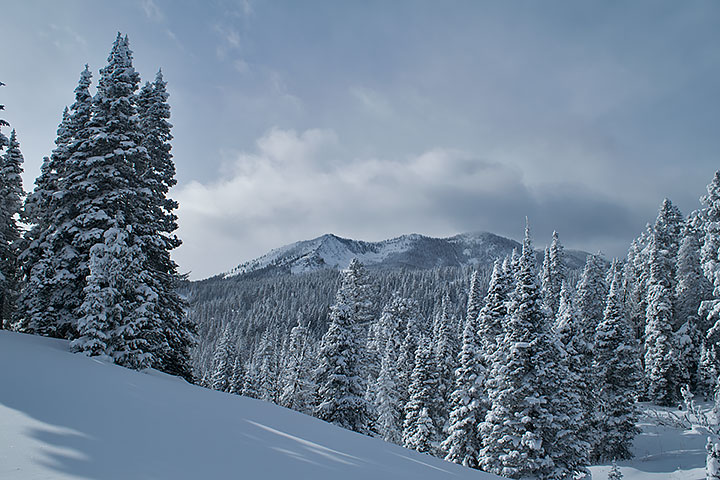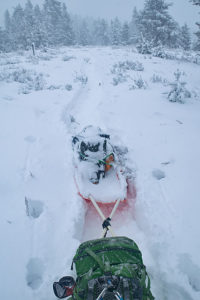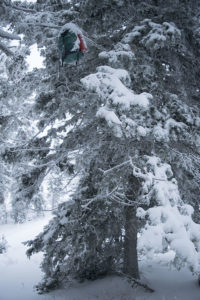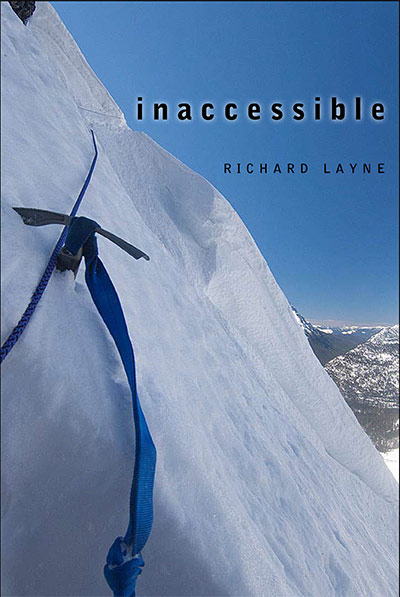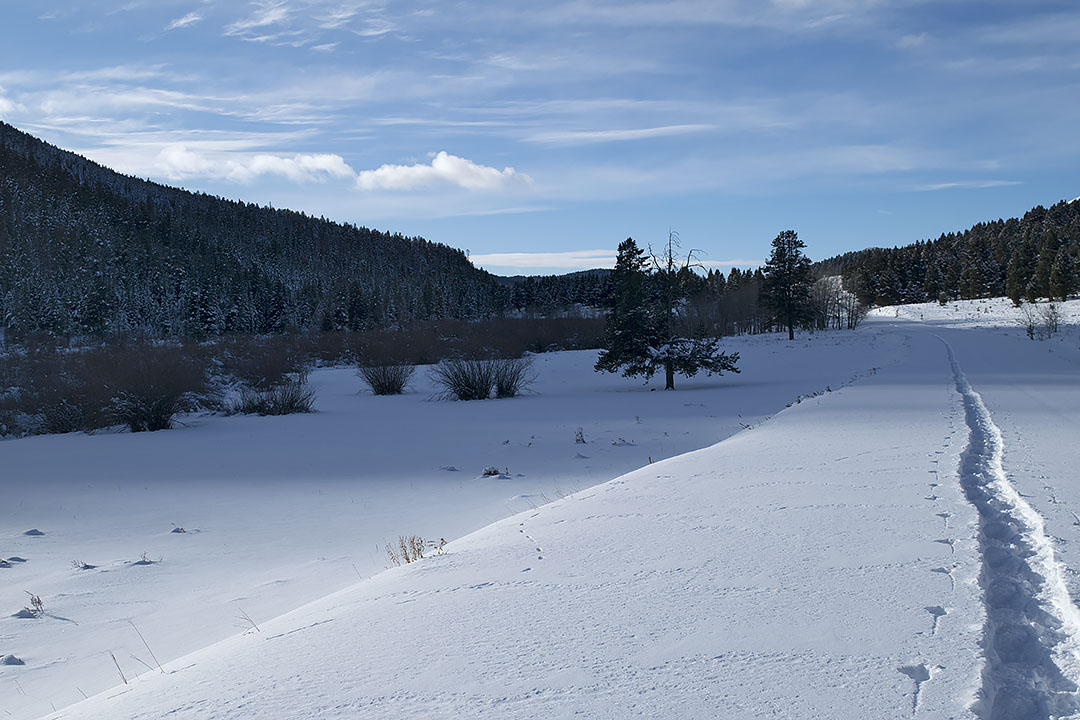
With the collapse of my most important protective gear, in particular the sleeping system, but also the down coat and my active clothing, which includes my boots and torso layers, there have been additional alterations made. As a result, when I continue the trip along the Great Divide, probably Wednesday, February 21, the weight of my load has increased to 91 pounds. This leg, the third this winter, will begin in Montana in the Centennial Valley, taking me up to Pete Creek Divide in the Centennial Mountains, and then west to the Monida Pass area and Interstate 15, a distance of 20 miles.
After an overnighter at the Mountain View Motel in Lima Montana, the next leg will take me west of Monida Pass and Interstate 15, which will be much tougher. At 52 miles in length, this leg will require a heavier load.
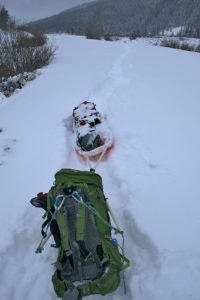
Later, with winter’s worst behind me, where temperatures will have been capable of dropping to forty and more degrees below zero Fahrenheit, I will shed some of the necessary protective gear, eventually getting the load down to 83 pounds. The lighter load will happen after mid-March, when the lowest temperature will only be capable of dropping to ten below zero.
In April, the coldest temperatures will remain above zero. At that time however, it will become necessary to carry climbing gear, approximately 15 pounds of additional weight.

